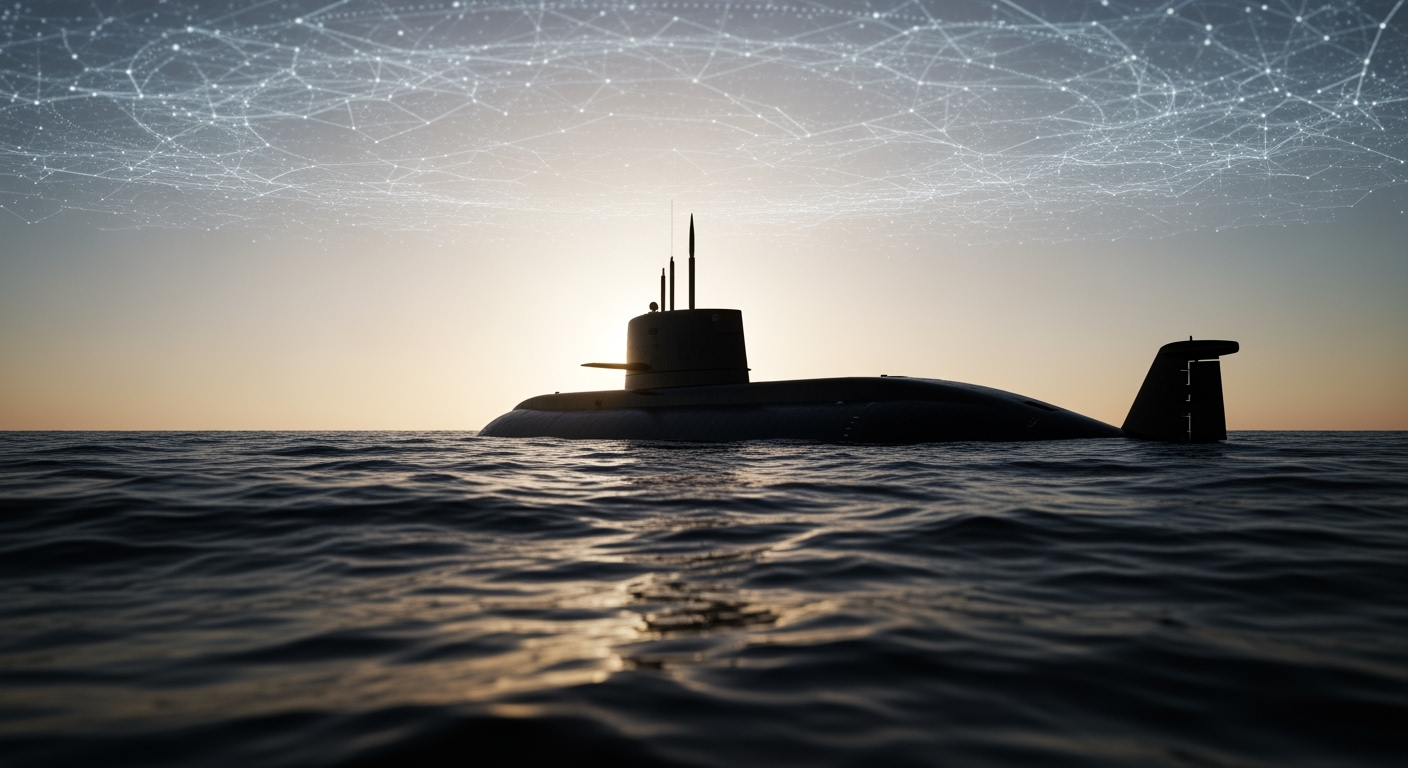Related Articles

The Hidden Danger: Unraveling the Complex Link Between Talc, Asbestos, and Cancer

The Hidden Sleep Divide: Why Women May Need More Rest Than Men





The ocean's depths, long considered the ultimate sanctuary for stealth submarines, are facing an unprecedented challenge from advanced artificial intelligence. Recent reports from China detail the development of an AI-driven anti-submarine warfare (ASW) system that claims to dramatically reduce the effectiveness of traditional submarine stealth tactics, potentially altering global naval power dynamics. This technological leap by Chinese researchers could force a fundamental reassessment of naval strategies, where the silent, undetected movement of submarines has been a cornerstone of deterrence for decades.
At the forefront of this technological shift is a groundbreaking AI-driven anti-submarine warfare system developed by a team led by chief engineer Meng Hao at the China Helicopter Research and Development Institute. Published in the journal Electronics Optics & Control, the research highlights an AI system designed to operate like a "smart commander at sea." Unlike conventional methodologies, this system integrates a vast array of data from multiple sources, including sonar buoys, underwater sensors, radar, and crucial oceanographic elements such as temperature, salinity, and current flows. This fusion of information creates a comprehensive, real-time depiction of underwater activities, allowing for precise tracking of submarines.
Through extensive computer simulations, the AI system reportedly demonstrated a remarkable success rate, locating and tracking submarines 95 percent of the time. This translates to a mere 5 percent chance for a submarine to evade detection and attack, a figure that, if replicated in real-world conditions, could render traditional submarine stealth obsolete. The system's advanced algorithms are also capable of adapting in real-time to evasive maneuvers, such as zigzagging, silent running, or the deployment of decoys, continuously adjusting its search patterns to maintain pursuit. Furthermore, the AI is designed to translate complex raw sensor input into clear, actionable tactical recommendations for human operators, streamlining decision-making in high-stress situations. Future iterations are envisioned to integrate with drone swarms, surface ships, and autonomous underwater vehicles (AUVs) to create a sophisticated, self-learning, three-dimensional detection network capable of scanning vast oceanic regions.
For more than half a century, the ability of submarines to operate undetected has been their most significant strategic advantage, forming a critical component of naval power and nuclear deterrence. Nuclear-powered submarines, specifically those equipped with ballistic missiles, represent a key pillar of the "nuclear triad," designed to ensure reliable retaliation and deter a potential first strike. The promise of such an AI system to effectively "see" through the ocean's opaqueness directly challenges this foundational principle.
The "cat-and-mouse" game of undersea warfare has historically been defined by a continuous struggle between improving submarine stealth and enhancing detection capabilities. Advances in noise-dampening technologies, anechoic tiles, and pump-jet propulsors have made modern Western submarines exceptionally quiet, allowing them to remain virtually invisible to conventional systems. However, the reported Chinese AI system, by fusing disparate data streams and employing sophisticated machine learning, aims to overcome these stealth measures by identifying subtle anomalies and patterns that human analysts or less advanced systems might miss. The potential erosion of submarine stealth capabilities could significantly destabilize existing deterrence doctrines and compel navies worldwide to re-evaluate their operational strategies.
The development of this AI-driven ASW system is part of China's comprehensive and rapid naval modernization effort. Over the past three decades, the People's Liberation Army Navy (PLAN) has transformed into the world's largest navy, making significant advancements in both the quantity and quality of its naval assets. Beijing's strategic objectives include achieving regional dominance, expanding its global presence, and developing capabilities to address contingencies such as the situation with Taiwan. This modernization encompasses a wide array of advanced platforms and technologies, including anti-ship ballistic missiles, surface combatants, and advanced Command, Control, Communications, Computers, Intelligence, Surveillance, and Reconnaissance (C4ISR) systems.
Beyond ASW, China is also leveraging AI in other critical naval applications. For instance, the PLAN has integrated AI into degaussing operations, which reduce a warship's magnetic signature, thereby enhancing its stealth capabilities and survivability against magnetic sensors and sea mines. This integration reportedly improved degaussing efficiency by 60 percent during recent drills. The overarching goal is to build a modern, blue-water navy capable of sustained global operations and challenging existing maritime hegemonies. Western navies are also actively pursuing AI integration into their ASW capabilities, focusing on autonomous underwater vehicles (AUVs), enhanced sensor networks, and real-time data analysis to improve detection accuracy and reduce false positives. The U.S. Navy is specifically exploring AI for various applications, including air operations control systems, and is evaluating U.S. weaknesses against evolving Chinese capabilities.
Despite the ambitious claims surrounding the Chinese AI ASW system, Western military experts maintain a degree of skepticism regarding its immediate operational impact. Professor Paul S. Schmitt, a U.S. expert on strategic and operational naval warfare, acknowledges AI's potential to enhance submarine hunting by analyzing large datasets. However, he emphasizes the formidable challenges posed by the extreme complexity of the underwater environment, which is inherently noisy and unpredictable. Some analysts also suggest that such announcements might serve as a form of psychological warfare, aimed at projecting technological superiority and influencing strategic calculations.
The dynamic nature of underwater warfare implies that while AI offers new detection capabilities, countermeasures will inevitably emerge. Strategies such as actively manipulating acoustic signatures to mimic natural sounds (like whales) or employing advanced decoys could be developed to confuse AI systems. The "game of cat-and-mouse" between stealth and detection is an ongoing technological race, demanding continuous innovation from all naval powers. The increasing ubiquity of passive sensors, coupled with improvements in computational power, will contribute to greater transparency in the oceans. However, the successful implementation of AI in such a challenging domain will require overcoming significant hurdles, including environmental variability, data processing limitations, and the integration of diverse sensor platforms.
The advent of sophisticated AI-driven ASW systems marks a pivotal moment in naval history, potentially signaling an end to the era of unquestioned submarine stealth. While Western experts caution against overstating immediate threats, the reported advancements out of China underscore a significant shift in military technology and strategic priorities. The implications extend beyond tactical advantage, touching upon the very foundation of nuclear deterrence and global power balances. As nations continue to invest heavily in AI for military applications, the underwater domain is poised to become a more transparent and contested space. The evolving technological arms race beneath the waves will necessitate continuous adaptation, innovation, and strategic foresight from all major maritime powers to ensure stability and security in an increasingly complex world.